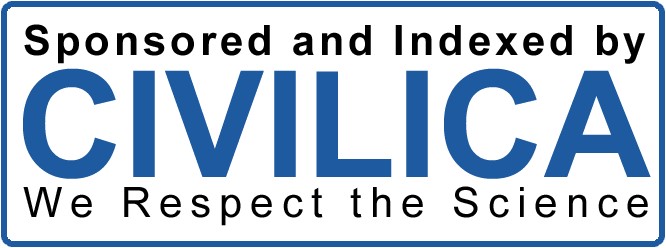Designing a Collaborative Learning Model in the Virtual Environment of Islamic Azad University, Tehran Province
Keywords:
Model, Learning, Collaborative, Virtual SpaceAbstract
The present study aimed to design a collaborative learning model in the virtual environment of Islamic Azad University in Tehran Province. This research employed a mixed exploratory (qualitative–quantitative) approach. The qualitative phase used self-emergent grounded theory based on semi-structured interviews with 15 educational management experts. In the quantitative phase, 148 doctoral students in educational management were randomly selected using the Morgan table. A researcher-made questionnaire was developed and data were analyzed using confirmatory factor analysis via LISREL. The confirmatory factor analysis revealed a model composed of three main dimensions: Technology (hardware, software, brainware), Management (instructional method, curriculum, evaluation), and Human (teacher, student, support), totaling 9 components and 62 indicators. All path coefficients were statistically significant, and the goodness-of-fit indices confirmed the model’s validity. The results demonstrate that the proposed model—with its defined dimensions and components—effectively explains collaborative learning in virtual settings and can serve as an operational framework for virtual education planning in Islamic Azad Universities.
Downloads
References
Abdul Munem, H. A. A., Husam Abdulhameed, H., Ashraf Kamil, R., & Dayef, O. M. (2019). Cloud computing application and its advantages and difficulties in the teaching process. Journal of International Teaching Management, 11(3), 82-98. https://www.researchgate.net/publication/338479862_Cloud_Computing_Application_and_Its_Advantages_and_Difficulties_in_the_Teaching_Process
Ahmadi, S., Abbaszadeh, Y., & Ghahramani, J. (2021). Presenting a Model for an E-Learning System in Higher Education Institutions of Iran. Educational Leadership and Administration(55), 137-164. https://journals.iau.ir/article_682440.html?lang=en
Cole, P. G. (2020). Use of online collaborative learning strategy in enhancing postgraduates' learning outcomes in science education. Educational Research and Reviews, 15(8), 504-510. https://doi.org/10.5897/ERR2020.4023
Firoozi, F., Taleb, Z., & Shah Mohammadi, N. (2021). Presenting a Collaborative Learning Model Based on Cloud Computing in Higher Education: A Grounded Theory Study. Modern Educational Approaches, 16(1), 21-42. https://nea.ui.ac.ir/article_26231.html
Jafari, A., Qian, Y., Webb, A., & Zhu, Y. (2025). Fostering Computational Thinking Through Virtual Reality to Enhance Human-Robot Collaboration. International Journal of Innovative Teaching and Learning in Higher Education, 5(1), 1-17. https://doi.org/10.4018/ijitlhe.367326
Khademi, Y., & Sadreddin, S. (2021). Evaluation and Prioritization of Types of Interaction and Participation in E-Learning Environments Using the Analytic Hierarchy Process (AHP). Information and Communication Technology in Educational Sciences(43), 87-108. https://www.magiran.com/paper/2242581/evaluation-and-prioritization-of-types-of-interaction-and-participation-in-e-learning-environment-using-hierarchical-analysis-process-ahp?lang=en
Kurnaedi, D., Widyarto, S., & Kahar, S. (2022). Collaborative E-Learning for Tangerang Vocational High School. Tech-E, 6(1), 50-55. https://doi.org/10.31253/te.v6i1.1770
Mukai Turugare, N., & Rudhumbu. (2020). Integrating technology in teaching and learning in universities in Lesotho: opportunities and challenges. Education and Information Technologies, 25, 3593-3612. https://doi.org/10.1007/s10639-019-10093-3
Nooijer, J. d., Schneider, F., & Verstegen, D. M. L. (2020). Optimizing collaborative learning in online courses. https://pmc.ncbi.nlm.nih.gov/articles/PMC7891413/
Paulsen, L., Dau, S., & Davidsen, J. (2024). Designing for Collaborative Learning in Immersive Virtual Reality: A Systematic Literature Review. Virtual Reality, 28(1). https://doi.org/10.1007/s10055-024-00975-4
Paulsen, L., & Davidsen, J. (2025). Activity-Based Collaborative Virtual Reality: Conceptualising Immersive Virtual Reality for Collaborative Learning. International Journal of Computer-Supported Collaborative Learning. https://doi.org/10.1007/s11412-025-09446-7
Putro, A. N. S. (2023). E-Learning in College: Bibliometric Analysis of Virtual Learning Environments and Online Course Delivery. The Eastasouth Journal of Learning and Educations, 1(02), 54-64. https://doi.org/10.58812/esle.v1i02.107
Spike, J., & Xie, Y. (2024). Using VR for Collaborative Learning. 1-15. https://doi.org/10.4018/978-1-6684-7366-5.ch040
Xue, L., Rienties, B., Van Petegem, W., & Van Wieringen, A. (2020). Learning relations of knowledge transfer (KT) and knowledge integration (KI) of doctoral students during online interdisciplinary training: an exploratory study. Higher Education Research & Development, 1-18. https://doi.org/10.1080/07294360.2020.1712679
Yamashita, I., & Vehmaskoski, K. (2025). Practice Report: On the Development of Medical English ESP Learning Model via VR Space in Collaboration With Finland. Proceedings of the Asiacall International Conference, 6, 365-375. https://doi.org/10.54855/paic.24625
Downloads
Published
Submitted
Revised
Accepted
Issue
Section
License
Copyright (c) 2025 نسرین ظاهری , مهدی شریعتمداری, عباس خورشیدی, یلدا دلگشایی (نویسنده)

This work is licensed under a Creative Commons Attribution-NonCommercial 4.0 International License.





